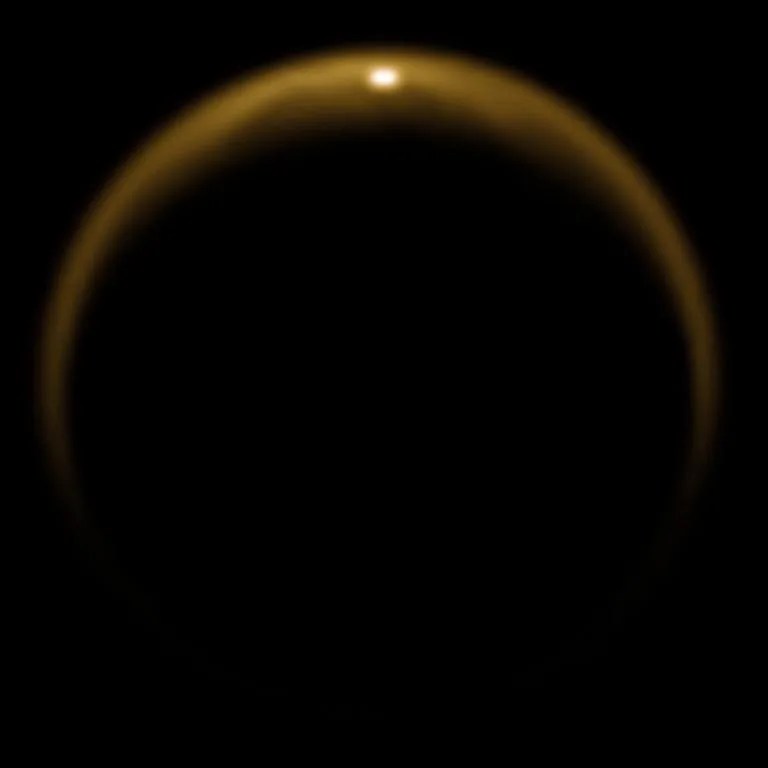3 min read

Cassini headed north for a close flyby of Titan on Dec. 27, 2009 (Dec. 28 Spacecraft Event Time). During this pass, RADAR got another view of the north polar lakes, which provided an opportunity to measure changes in lake size and other lake characteristics. Other instruments utilized this opportunity to sample the high northern atmosphere as well as to look for possible seasonal changes.
The Ion and Neutral Mass Spectrometer (INMS) was prime on the inbound leg of T64, and riding with RADAR outbound. This nearly north polar flyby is critical when paired with T65, which will be nearly south polar. Scientists are eager to take advantage of the opportunity to view the north and south poles in close temporal proximity to compare the atmosphere and the surface topography. This flyby will also help study any seasonal variations that may have occurred in the north since the early part of the prime mission.
RADAR observations included altimetry and ride-along Synthetic Aperture Radar (SAR) with INMS inbound to Titan, SAR outbound, and altimetry and hi-altitude SAR over northern polar lakes to perform stereo and seasonal change detection. This was the only opportunity to collect north polar SAR data in the extended mission.
This flyby allowed the Visual and Infrared Mapping Spectrometer (VIMS) to acquire a mosaic of Titan between 160 and 300 deg longitude at a resolution of 20 km/pixel. VIMS also monitored for mid-latitude clouds and surveyed the evolution of the north polar hood
The Composite Infrared Spectrometer (CIRS) obtained mid-northern latitude composition and temperature vertical profiles.
ISS acquired a full-disk mosaic of Adiri and rode along with VIMS to observe Adiri at higher resolution and to monitor clouds. ISS also monitored Titan to track clouds and their evolution for an extra day after the Titan encounter.
T64 was a north polar dusk flyby with a minimum altitude of 955 km. In normal upstream conditions, Cassini would explore the north lobe of Titan's magnetic tail, very close to the moon. Due to the location of the point of closest approach, it was potentially important regarding the detection of an intrinsic magnetic field, but not as good as T70 will be. With adequate pointing of Magnetospheric and Plasma Science (MAPS) instruments, Magnetometer data acquired during this flyby will be extremely helpful in the identification of escaping particles similar to those that could be seen in T63. If the upstream conditions are similar to T63, T64 will be extremely important to have an idea of the structure of Titan's magnetic tail in the dusk sector.
The Magnetospheric Imaging Instrument measured energetic ion and electron energy input to the atmosphere.
The Radio and Plasma Wave Science (RPWS) instrument measured thermal plasmas in Titan's ionosphere and surrounding environment, searched for lightning in Titan's atmosphere, and investigated the interaction of Titan with Saturn's magnetosphere.
Date
Dec. 28, 2009
Altitude
593 miles (955 km)
Speed
13,400 mph (6.0 km/sec)







